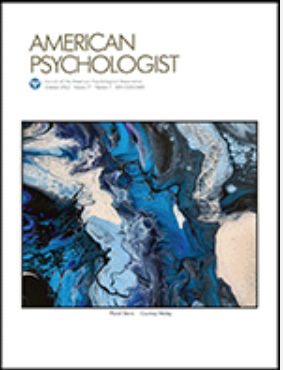Philip G. Zimbardo(1933-2024)。
摘要
本文纪念菲利普·g·津巴多(1933-2024)。津巴多在高中毕业班被评为“最受欢迎的学生”,他进入布鲁克林学院学习,主修社会学、人类学和心理学,并于1954年毕业。随后,他进入耶鲁大学读研,师从尼尔·米勒和卡尔·霍夫兰,并于1959年获得博士学位。他在纽约大学开始了他的职业生涯,从1960年到1967年,他在那里教书,通常一年教10门课。1967年,他在哥伦比亚大学任教一年,他未来的同事李·罗斯(Lee Ross)是他的学生之一。1968年,他搬到斯坦福大学,并在那里任教了50多年。津巴多的研究涵盖了无数的主题,从早期关于态度改变、不和谐和去个性化的研究,到关于害羞、不连续性和时间视角的基础研究,再到他过去20年关于英雄主义的研究。谷歌学者目前记录了超过72000次引用他的工作;引用最多的是他对时间视角的研究和他的获奖作品《路西法效应》(2007)。他长期以来对善与恶,以及导致人们以反社会或亲社会的方式行事的原因感兴趣,首先在他对去个性化和情境因素(如匿名性和差异权力的社会角色)的研究中得到了解决。这导致了斯坦福监狱实验,这是一项模拟研究,参与者被随机分配在几天内扮演看守或囚犯的角色。虽然这项研究可能是津巴多最为人所知的,但它并不是津巴多最引以为傲的工作,他在一次采访中说,他更重要的研究是他对害羞的研究和斯坦福害羞诊所的建立。在时间视角方面,人们经历了对过去、现在和未来的不同时间取向,后来的工作包括发展个体差异测量,津巴多时间视角量表,该量表已被广泛翻译为国际使用。最近,津巴多将他的研究重点从恶转向善,无论是在英雄行为的研究方面,还是在运用心理学原理来促进日常善良和英雄主义行为的广泛应用方面。他建立了一个非营利组织“英雄想象计划”,该组织随后在其他国家建立了“英雄想象计划”中心。菲利普·津巴多是一位热情、热情、机智的心理学家,对人性有着深刻的研究。他只想与他人分享他对心理学的理解和热爱,以帮助改善个人生活以及更广阔的世界。(PsycInfo Database Record (c) 2025 APA,版权所有)。This article memorializes Philip G. Zimbardo (1933-2024). Voted "most popular" in his high school graduating class, Zimbardo went on to Brooklyn College, where he triple-majored in sociology, anthropology, and psychology, graduating in 1954. He then attended graduate school at Yale University, studying under Neal Miller and Carl Hovland, and completing his PhD in 1959. He began his career at New York University, where he taught from 1960 to 1967, often teaching 10 courses a year. In 1967, he taught for a year at Columbia, where his future colleague, Lee Ross, was among his students. He moved to Stanford in 1968 and remained on the faculty there for over 50 years. Zimbardo's research covered a myriad of topics, from early work on attitude change, dissonance, and deindividuation, to foundational work on shyness, discontinuity, and time perspective, to his last 2 decades of work on heroism. Google Scholar currently records over 72,000 citations to his work; the highest citations go to his research on time perspective and to his award-winning book, The Lucifer Effect (2007). His longtime interest in good and evil, and what leads people to act in either antisocial or prosocial ways, was first addressed in his research on deindividuation and situational factors like anonymity and social roles of differential power. This led to the Stanford Prison Experiment, a simulation study in which participants were randomly assigned to play the roles of either guards or prisoners over several days. Although perhaps best known for that study, it was not the work Zimbardo was most proud of, arguing in one interview that his more important research was his work on shyness and the establishment of the Stanford Shyness Clinic. Later work on time perspective, in which people experience different temporal orientations to past, present, and future, included the development of an individual difference measure, the Zimbardo Time Perspective Inventory, which has been translated widely for international use. More recently, Zimbardo shifted his focus from evil to good, both in terms of research on heroic behaviors and on the application of psychological principles to promote widespread actions of everyday kindness and heroism. He established a nonprofit organization, the Heroic Imagination Project, which then established Heroic Imagination Project centers in other countries. Philip Zimbardo was a warm, welcoming, and witty psychologist and a profound student of human nature. He wanted nothing more than to share his understanding and love of psychology with others to help improve individual lives as well as the wider world. (PsycInfo Database Record (c) 2025 APA, all rights reserved).

 求助内容:
求助内容: 应助结果提醒方式:
应助结果提醒方式:


